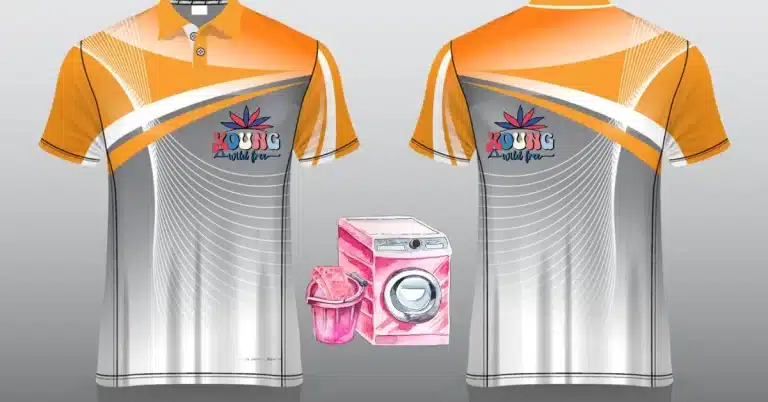What Sublimation is: A Details Guide by Subli Genius Print
Have you ever wondered how dry ice produces fog or how naphthalene balls disappear over time? These are examples of a process called Sublimation, which is the transition of a substance from the solid to the gas state without passing through the liquid form. Here, I will explain what Sublimation is, how it works, and why it is essential for various applications.
What Sublimation is?
Key Points:
- It seems likely that sublimation printing involves using heat to transfer ink onto materials like polyester fabric and ceramics, creating vibrant, durable designs.
- Research suggests that the process includes designing, printing on special paper, and using a heat press, with optimal temperatures typically between 300°F and 400°F.
- The evidence leans toward sublimation printing being ideal for custom apparel, home decor, and promotional items, but it has limitations, such as compatibility with specific materials.

Sublimation printing is a technique where ink is transferred from paper to materials like polyester fabric, ceramics, and coated plastics using heat. The ink turns into a gas and bonds with the material, resulting in permanent, vibrant prints. This method is popular for creating custom products due to its durability and color quality.
How It Works
The process starts with designing your artwork, printing it on special sublimation paper, and then using a heat press to transfer the ink onto the material. After cooling, you get a finished product with long-lasting designs. For detailed steps, visit our Sublimation Printing Guide.
Sublimation can be represented by the following equation:

To illustrate how Sublimation works, let’s take the example of dry ice, the solid form of carbon dioxide. Dry ice dissolves at room temperature and normal atmospheric pressure because its vapor pressure is much higher than the pressure of carbon dioxide in the air.
Dry ice absorbs heat from the surrounding and gains enough energy to escape from the solid lattice when exposed to air. The dry ice transforms into carbon dioxide gas, resulting in fog or smoke.
The following diagram shows the Sublimation of dry ice using mermaid syntax:

Applications and Materials
It’s great for t-shirts, mugs, and pillows, but works best on materials with high polyester content or special coatings. For a list of compatible materials.
- Polyester Fabrics: Ideal for t-shirts, hoodies, and other apparel, as noted in Best Fabrics for Sublimation.
- Coated Ceramics: Suitable for mugs and plates, as mentioned in Sublimation on Wood.
- Sublimation-Ready Plastics and Woods: Requires special coatings, as seen in Sublimation Blanks and Substrates.
🧪 Sublimation in Chemistry: What Is It?
In chemistry, sublimation is the process where a solid turns directly into a gas without becoming a liquid first. Think of dry ice (solid CO₂) releasing foggy vapor—that’s sublimation in action! It happens under specific temperature and pressure conditions, often used in labs to purify substances.
🧪 What is Sublimation? (Class 9)
Sublimation is a process where a solid changes directly into a gas without turning into a liquid first. For example, when naphthalene balls (mothballs) slowly disappear over time, they sublimate into gas! This happens because of heat and low pressure, and it’s a special property of some substances.
🎨 What is Sublimation in Art?
In art, sublimation refers to the process of transforming emotions, ideas, or experiences into creative expressions, often as a way to channel complex feelings into something beautiful. It’s also a printing technique where ink is heated to a gas and bonds with materials like fabric or canvas, creating vibrant, long-lasting artwork.

Example of a sublimation-printed canvas with a vibrant abstract design.
Molecular Explanation of Sublimation
Sublimation is the phase transition of a substance to the gas phase without passing through the liquid phase. This happens when the molecules of the stable have enough kinetic energy to overcome the intermolecular forces that hold them together in a fixed structure. The molecules escape from the surface of the concrete and enter the gas phase, where they have more freedom of movement and less order.
Sublimation is an endothermic process which absorbs heat from the surroundings. The amount of heat required for Sublimation is equal to the sum of the heat of fusion and the heat of vaporization of the substance.
Why is Sublimation necessary?
Sublimation is not only a fascinating phenomenon but also useful for various applications. Here are some examples of how Sublimation is used in different fields:
- In the textile industry, Sublimation is used for printing designs on fabrics. A special ink is applied to a paper and pressed onto the material under high temperature and pressure. The ink sublimes and transfers to the fabric, creating a permanent and vibrant image.
- In the food industry, freeze-drying is a method of preserving food by Sublimation. The food is frozen and placed in a vacuum chamber, where the water sublimes from the solid to the gas phase. This removes the moisture from the food, preventing microbial growth and spoilage. Freeze-dried food retains its original shape, color, flavor, and nutrients and can be rehydrated.
- In forensic science, the Sublimation of iodine can reveal latent fingerprints on paper. Iodine crystals are heated in a closed container, producing iodine vapor that reacts with the oils and fats in the fingerprints. The fingerprints become visible as brown or purple marks on the paper, which can be photographed or lifted with tape.
- In the chemical industry, Sublimation is used to purify volatile compounds with low melting points. For example, naphthalene, camphor, and iodine can be filtered by Sublimation, as they sublime easily and leave behind impurities in the solid residue.
These are just examples of how Sublimation is used in various applications. Sublimation is a remarkable process demonstrating matter’s diversity, complexity, and behavior.
Advantages and Disadvantages
Advantages:
- Vibrant, Long-Lasting Colors: The ink becomes part of the material, resisting fading and cracking.
- Versatility for Full-Color Designs: Suitable for complex, detailed prints.
- Eco-Friendly and Cost-Effective: Minimal waste and efficient for bulk orders.
Disadvantages include:
- Limited Material Compatibility: Primarily works on polyester or coated surfaces.
- Initial Setup Costs: Requires special equipment like printers and heat presses, which can be expensive.
- Color Reproduction Challenges: Managing colors between RGB and CMYK can be tricky, requiring ICC profiles, as discussed in Best ICC Profiles for Sublimation Fix Color Accuracy Print Quality.
This balanced view ensures users understand both the benefits and limitations, aligning with Subli Genius Print’s comprehensive approach.
Applications and Common Uses
Sublimation printing is widely used across various industries:
- Apparel: Custom t-shirts, jerseys, and hoodies.
- Home Decor: Pillows, curtains, and wall art.
- Promotional Items: Mugs, keychains, and promotional giveaways.
This diversity showcases the versatility, an unexpected detail for users who might initially think it’s limited to clothing, enhancing the appeal of Subli Genius Print’s offerings.
Tips for Beginners and Best Practices
For those new to sublimation printing, consider these tips:
- Choose Quality Equipment: Ensure compatibility with your printer, inks, and materials.
- Follow Heat Press Settings: Use temperatures between 300°F and 400°F and adjust times (30 seconds to 4 minutes) based on material.
- Manage Colors Effectively: Use ICC color profiles for accurate reproduction.
- Test Prints: Always conduct test prints to check color accuracy and quality, a practice emphasized in Sublimation Color Chart.
Equipment and Supplies
To engage in sublimation printing, you’ll need:
- Sublimation Printer: Specialized printers like those offered by Subli Genius Print.
- Sublimation Ink: High-quality inks for vibrant results.
- Sublimation Paper: Papers with high transfer rates.
- Heat Press: Reliable machines for consistent heat and pressure.
- Sublimation Blanks: Materials ready for printing.
Subli Genius Print’s product range, including these items, ensures users have access to everything needed, enhancing their shopping experience.
About Subli Genius Print: Company Overview
Subli Genius Print is a trusted partner in sublimation printing excellence, offering practical tips, expert advice, and step-by-step instructions to help users master the craft, includes guides on printer maintenance, color management, and more, catering to both small businesses and individuals.
They also provide wholesale apparel and customizable accessories, as noted in their product categories, ensuring a comprehensive service for resellers and creators.
I hope you enjoyed reading this article and learned something new about Sublimation. If you have any questions or comments, please share them below. Thank you for your attention.



